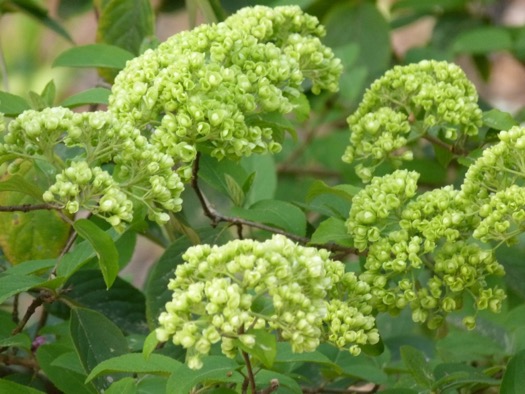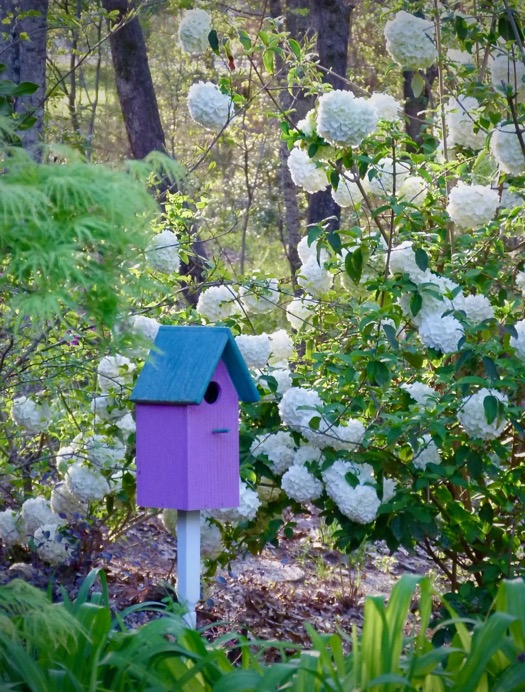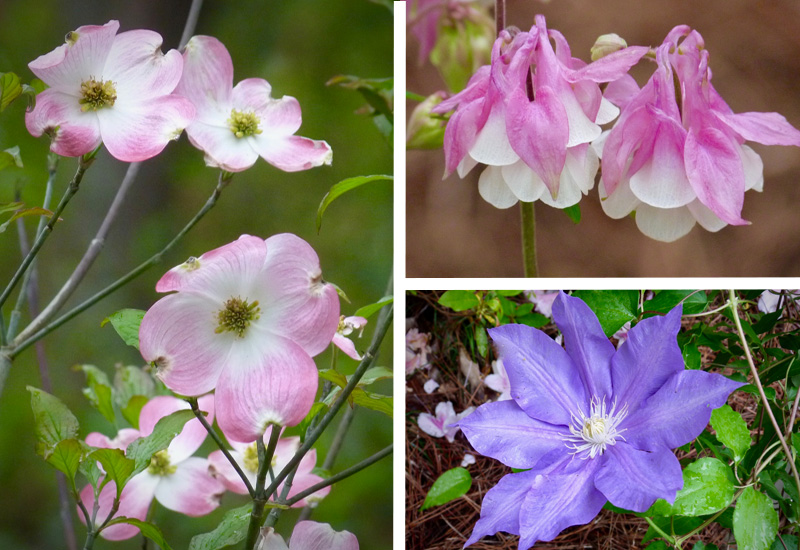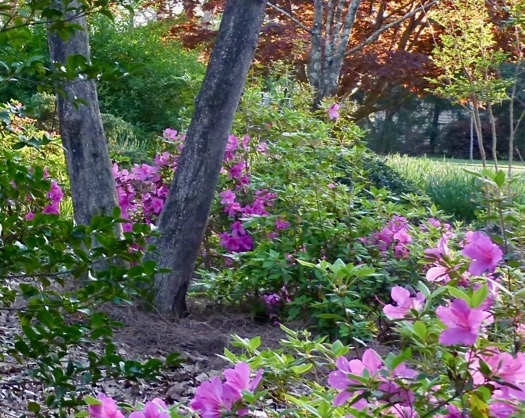Mid-spring in Deb's Garden, 2018
 Saturday, April 14, 2018 at 10:30PM
Saturday, April 14, 2018 at 10:30PM I heard a commentator on the radio say that winter is like a grumpy old man, arguing and complaining about everything. You heave a sigh of relief as he finally starts to leave. But as he is going out the door, he turns back and says, "Oh, and one more thing..."
We are well into mid-spring now, but with temps still sometimes dropping near freezing, I have not been able to plant summer annuals or veggies or put my potted tropical plants outdoors. But it won't be long. Meanwhile, spring flaunts its glorious colors, and the world is alive with new growth and fresh flowers. Young bloom of Rosa rugosa 'Alba' - a wonderfully fragrant species rose.Trees are green again. We have had plenty of rain (and some weeds grow two feet overnight). I enjoy the cool mornings and temperate afternoons. I am busy, busy, busy!
Young bloom of Rosa rugosa 'Alba' - a wonderfully fragrant species rose.Trees are green again. We have had plenty of rain (and some weeds grow two feet overnight). I enjoy the cool mornings and temperate afternoons. I am busy, busy, busy!
Here are some recent scenes around the garden. I wish you could also feel the crisp breeze, hear the birds chirp and the bees buzz, and smell the fragrances of fresh earth, pine straw and sweet blooms!
 George Lindley Taber azaleas
George Lindley Taber azaleas
 Young blooms of Snowball Viburnum
Young blooms of Snowball Viburnum
 Snowball Viburnum grows behind the pink birdhouse.
Snowball Viburnum grows behind the pink birdhouse.
 Clockwise from upper left: Native azalea; Snowball Viburnum; Late-blooming daffodil; Calycanthus floridus 'Athens' - it smells like ripe bananas.
Clockwise from upper left: Native azalea; Snowball Viburnum; Late-blooming daffodil; Calycanthus floridus 'Athens' - it smells like ripe bananas.
 Clockwise from left: Cornus Florida 'Cherokee Princess'; Aquilegia vulgaris (old fashioned Granny's Bonnet Columbine); Clematis 'H F Young.'
Clockwise from left: Cornus Florida 'Cherokee Princess'; Aquilegia vulgaris (old fashioned Granny's Bonnet Columbine); Clematis 'H F Young.'
 Heuchera 'Caramel'
Heuchera 'Caramel'
 I have forgotten the unpronounceable name of this Japanese maple I obtained from former Auburn head football coach Pat Dye, but I love its variegated pink foliage.
I have forgotten the unpronounceable name of this Japanese maple I obtained from former Auburn head football coach Pat Dye, but I love its variegated pink foliage.

 A scene in the front garden. The beautiful heuchera in front was a bargain find at the end of last summer that had no tag. I wish I knew its name, as I want to buy more!I hope you enjoyed a peek at my mid-spring garden. Blessings to you all! Deb
A scene in the front garden. The beautiful heuchera in front was a bargain find at the end of last summer that had no tag. I wish I knew its name, as I want to buy more!I hope you enjoyed a peek at my mid-spring garden. Blessings to you all! Deb

